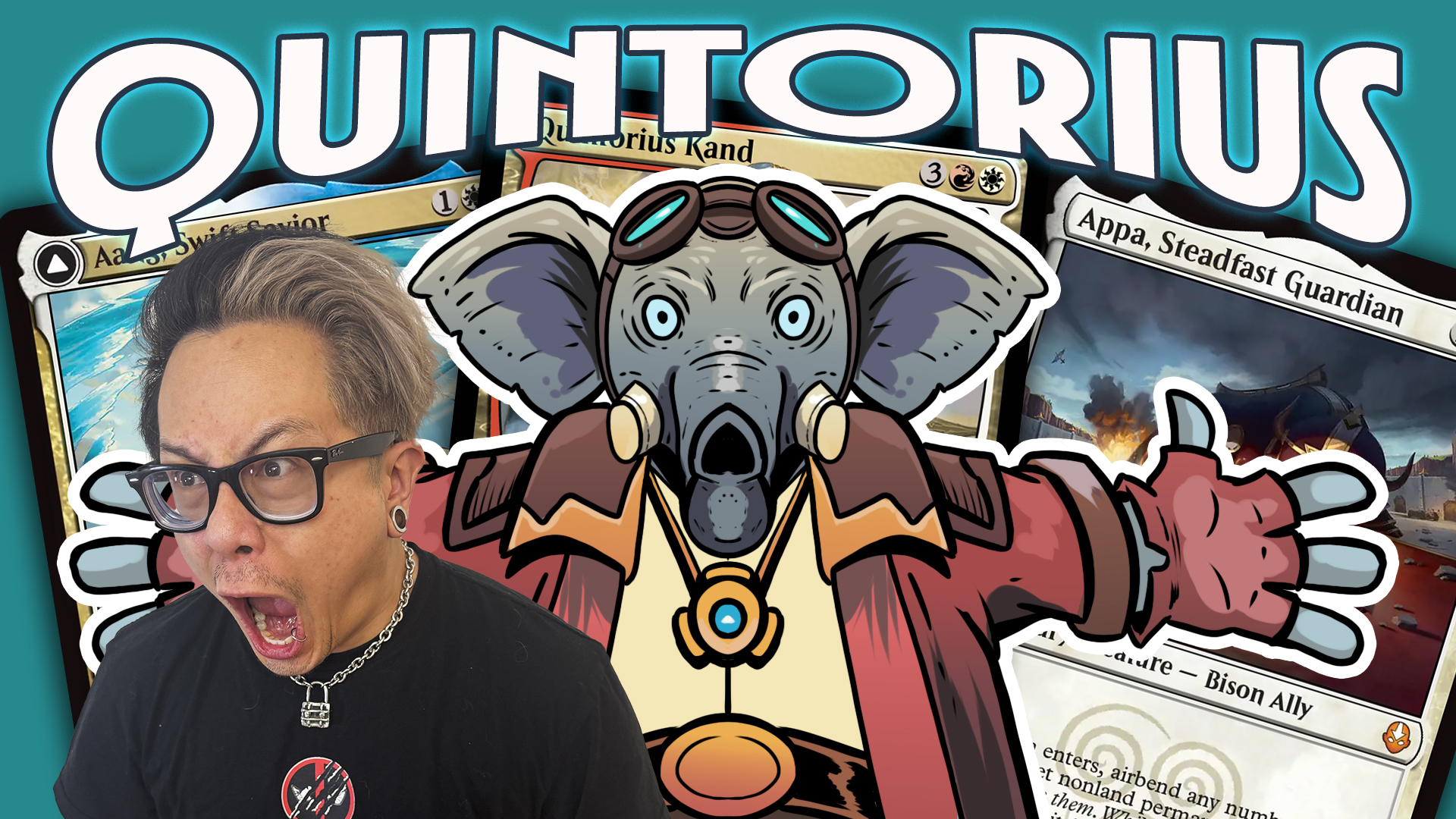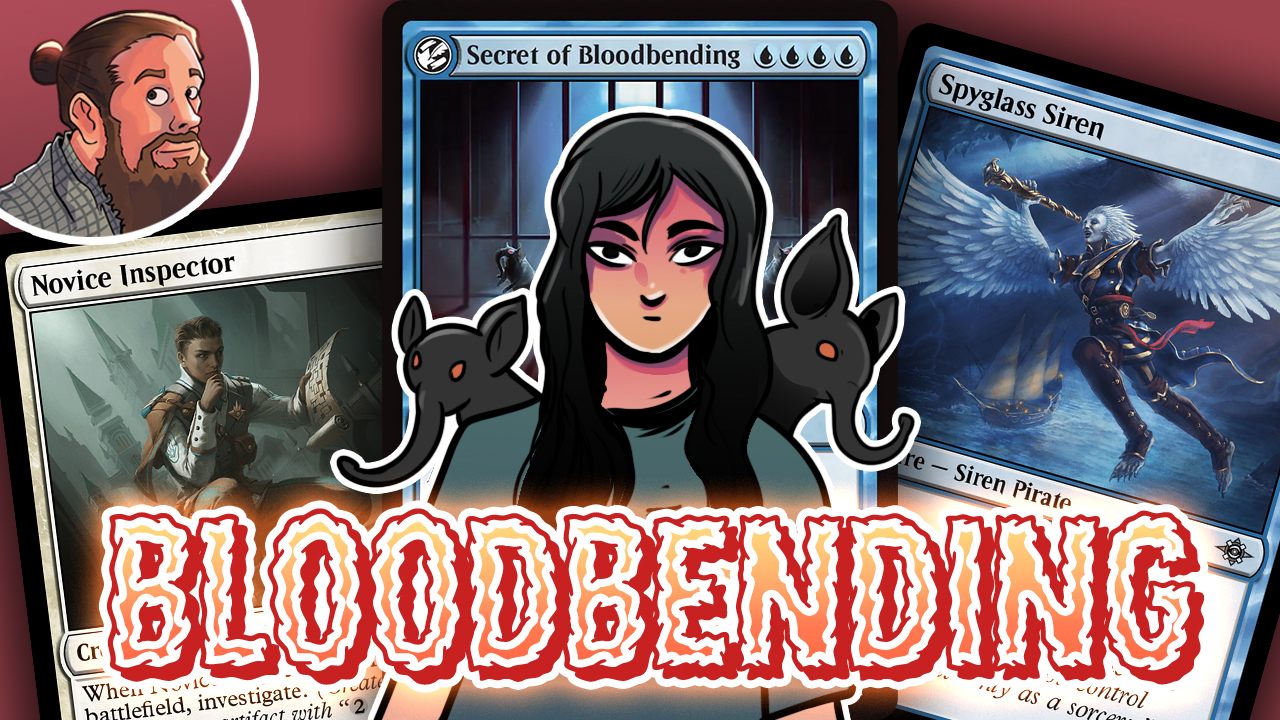Budget Magic: $86 (17 tix) GW Auras (Standard, Magic Arena)
Howdy, Budget Magic lovers, it's that time once again! Theros: Beyond Death is here, and we're kicking off our budget exploration of the new Standard format with a deck that is both super powerful and super cheap: GW Auras! The deck is sort of a weird Standard-legal version of Bogles, except without many actual hexproof creatures, that's looking to build one huge threat, with the help of cards like All That Glitters and Setessan Training, all while drawing a ton of cards with the help of Setessan Champion and Season of Growth. Speaking of Setessan Champion, one of the upsides of GW Auras on Magic Arena specifically is that its the only non-land rare in the main deck, so if you're looking to grind on the cheap, GW Auras wouldn't set you back many wildcards at all. How good is GW Auras in Theros: Beyond Death Standard? Let's get to the video and find out; then, we'll talk more about the deck!
A quick reminder. If you enjoy Budget Magic and the other content on MTGGoldfish, make sure to subscribe to the MTGGoldfish YouTube channel to keep up on all the latest and greatest.
Budget Magic: GW Auras (Pioneer)

The Deck
GW Auras is similar to Bogles in Modern or Pioneer, except we only have one hexproof creature in Paradise Druid, and even Paradise Druid is only hexproof some of the time. As such, the deck is really more of an aura-based Voltron-style aggro deck looking to build one massive threat with the help of auras, protect it, and ride it to victory by giving it evasion to kill our opponent in just one or two huge attacks.
The Engine


Season of Growth and Setessan Champion are the engine that runs our deck, drawing us a ton of cards as we cast all of the enchantments in our deck. While both have different upsides, the foundation of both cards is that we get to draw a card whenever we enchant one of our creatures with an aura. Setessan Champion has the benefit of also being a creature that grows massive over the course of a few turns, but this also gives it the drawback of dying to creature removal. Meanwhile, Season of Growth is hard to kill but needs us to stick a creature or two for it to really do anything.
If you decide to pick up the deck, the importance of these cards cannot be understated. We really want our opening hand to have at least one of our engine pieces, along with a creature and an aura to get the engine running. Aggressively mulligan for these cards since once we have Season of Growth or Setessan Champion, we quickly make up the cards that we lose to the mulligan, and we often end up in a position where we are discarding to hand size anyway, even after mulliganing to six or five. A hand has to be very good for it to be a keep at seven or six without either Season of Growth or Setessan Champion.
The Creatures



When it comes to loading up a creature with auras, we can technically use any of our creatures (thanks to some other cards that can help protect them from our opponent's removal), but our best option is Paradise Druid thanks to its ability to be hexproof as long as it is untapped. Normally, this ability wouldn't be all that helpful since to actually damage our opponent, we'd need to tap and attack with Paradise Druid, but we have six auras that give vigilance in our deck in Sentinel's Eyes and Sentinel's Mark. These allow us to turn Paradise Druid into a true Bogle since we no longer need to tap Paradise Druid to attack with it. Plus, Sentinel's Eyes and Sentinel's Mark are cheap auras that buff our creatures and also draw us cards with the help of Season of Growth and Setessan Champion, so they perform multiple roles in our deck. Sentinel's Eyes is nice since it keeps coming back from the graveyard for a low price, while Sentinel's Mark allows us to get in a huge lifelinking attack to swing the race in our favor.

Siona, Captain of the Pyleas is sort of middling in our deck, with three mana being a lot for a creature. While drawing an aura from our top seven cards when she comes into play is nice, our deck generates so much card advantage with Season of Growth and Setessan Champion that drawing one with Siona isn't usually all that meaningful. So why is Siona in our deck? The answer here is that one of the ways our opponent can deal with our massive aura-bearing creature is an edict effect like Priest of Forgotten Gods or Pharika's Libation. Siona, Captain of the Pyleas makes a 1/1 token whenever we put an aura on one of our creatures, and these 1/1 tokens are the perfect sacrifice fodder for edict effects, allowing us to keep our huge Setessan Champion or Paradise Druid around.


Rounding out our creature package is Alseid of Life's Bounty, which, along with Karametra's Blessing, helps us to protect our creatures from our opponent's removal. Alseid of Life's Bounty is sometimes a weird protection spell that sits on the battlefield and sometimes one of our best creatures to load up with auras since it has lifelink. Against decks like Gruul Embercleave, our opponent will have a hard time killing Alseid of Life's Bounty once we get it up to three or five toughness, and getting in a huge lifelinking attack each turn is a great way to win the race. Meanwhile, Karametra's Blessing is a key piece in making our deck resilient to removal. Since all of our creatures are either enchantment creatures or creatures that are likely to be enchanted, it not only pumps the creature but also gives it hexproof and indestructible, which means it not only fizzles a targeted removal spell but also sweepers like Time Wipe, Shatter the Sky, and Kaya's Wrath as well, which would otherwise be very strong against our deck.
Winning the Game



When it comes to killing our opponent, our most important card is All That Glitters. With the absurd number of enchantments in our deck, it is usually giving a creatures +6/+6 or even +10/+10, which means a couple of copies will usually make a creature into a one-shot kill attacker. Of course, the problem with this plan is that our opponent could simply chump block with something like Cauldron Familiar or another small creature. This is where Setessan Training and Angelic Gift come in: to give our massive threat evasion, in the form of either trample or flying, to take the chump-blocking plan off the table for our opponent and allow us to close out the game quickly. It's also worth mentioning that Alseid of Life's Bounty is a good way to force through damage by giving our Voltron creature protection from whatever color of blockers our opponent might have. But be warned that if we choose white or green, the protection will also make our own auras fall off.
The Sideboard




Normally, we don't talk too much about sideboarding, but it is very important with GW Auras. The trick is to not over-sideboard since our deck needs a critical mass of engine pieces, creatures, and auras to work. Sideboarding with GW Auras usually involves bringing in three or four copies of a single card, and you almost never want to sideboard much more than that. Apostle of Purifying Light is for Mono-Black Devotion and various black-based aggro decks. If our opponent is only or mostly relying on black removal, it is basically a better Paradise Druid since our opponent can't kill or block it. Plus, it gives us a way to block things like Knight of the Ebon Legion in the early game. Destiny Spinner is for counterspell-heavy control and midrange decks. Hushbringer is for various Thassa, Deep-Dwelling / Yarok, the Desecrated / Agent of Treachery / Risen Reef builds (although be warned that it can be dangerous against decks with Uro, Titan of Nature's Wrath or Kroxa, Titan of Death's Hunger since it allows them to stick around on Turn 2 or 3) while also being decent against some Nightmare Shepherd / Prime Speaker Vannifar decks as well. Finally, Leyline of Sanctity is for decks with a ton of edicts or discard spells (mostly Grixis / Rakdos / Dimir midrange and control) to keep our opponent from targeting us with things like Thought Erasure, Pharika's Libation, and Priest of Forgotten Gods). Otherwise, Banishing Light is a sort of catch-all removal spell, although in reality, it doesn't come in all that often.
Wrap-Up
All in all, we went 5-0 with GW Auras, winning some spectacular games along the way. The deck is extremely powerful, although it can be tricky to play, mostly because it involves some tough mulliganing decisions, and sequencing your plays in a way that allows you to protect your creatures from removal and wraths is very important because one false step means that you not only lose a creature but also a bunch of auras attached to it. It's important to prioritize protection (things like leaving up Alseid of Life's Bounty or Karametra's Blessing) over casting additional auras to further buff our threat. The idea is that if we protect our creature, we are likely to eventually win the game, so the slow but safe plan is often ideal.
As far as changes to make to the deck, I'm pretty happy with where it landed in general. I'm not completely sold on Siona, Captain of the Pyleas, but the deck does need something to protect against edicts, and Siona might be the best option. If you have a bit more to spend, a couple of Castle Ardenvales in the mana base would offer a nice way to rebuild in the late game if things go wrong, while also offering another edict buffer in longer games. Otherwise, I'd keep playing the deck exactly as-is. Oh yeah, I've seen some people playing auras decks with Bronzehide Lion, but I tried it and didn't find it especially impressive. Leaving up two (or even four) mana each turn to protect it makes it too hard to cast enough auras to actually win the game.
All in all, GW Auras felt extremely solid. The strategy is really hard for many opponents to interact with, and especially considering how cheap the deck is (especially on Magic Arena), I have to think it is one of the best budget options for Theros: Beyond Death Standard. If you're a Bogles player in Modern or Pioneer, or just looking for a really cheap way to grind Theros: Beyond Death Standard, give GW Auras a shot!
Ultra-Budget GW Auras
If you want to get the deck down near $50, all you need to do is to cut Temple Garden. That said, losing an untapped dual land is especially painful for GW Auras because the deck wants to curve out and is surprisingly mana hungry once the engine gets going since we want to cast as many auras as possible in one turn while still leaving up a way to protect our threat. If you do want to go this direction, I'd probably just play more basic lands over another tapped dual land like Selesnya Guildgate. You can also cut Leyline of Sanctity from the sideboard for more copies of Hushbringer, Destiny Spinner, and Banishing Light, although the games against discard-heavy decks will be tougher since if our opponent can snag our engine piece on Turn 2 before we can play it, we are sometimes left with a hand that does nothing.
Non-Budget GW Auras
Other than adding two copies of Castle Ardenvale to the mana base over two Plains, the build we played on video is pretty much optimal, in my opinion. GW Auras is one of those decks that just happens to be cheap even when fully powered. If you're looking for a more expensive and somewhat similar take on the archetype, check out Crim's Bant Bogles deck from Fish 5-0. Personally, I prefer the consistency of being two colors, but adding blue to the deck does offer Staggering Insight, which is a very powerful aura.
Conclusion
Anyway, that's all for today. As always, leave your thoughts, ideas, opinions, and suggestions in the comments and you can reach me on Twitter @SaffronOlive or at SaffronOlive@MTGGoldfish.com.













